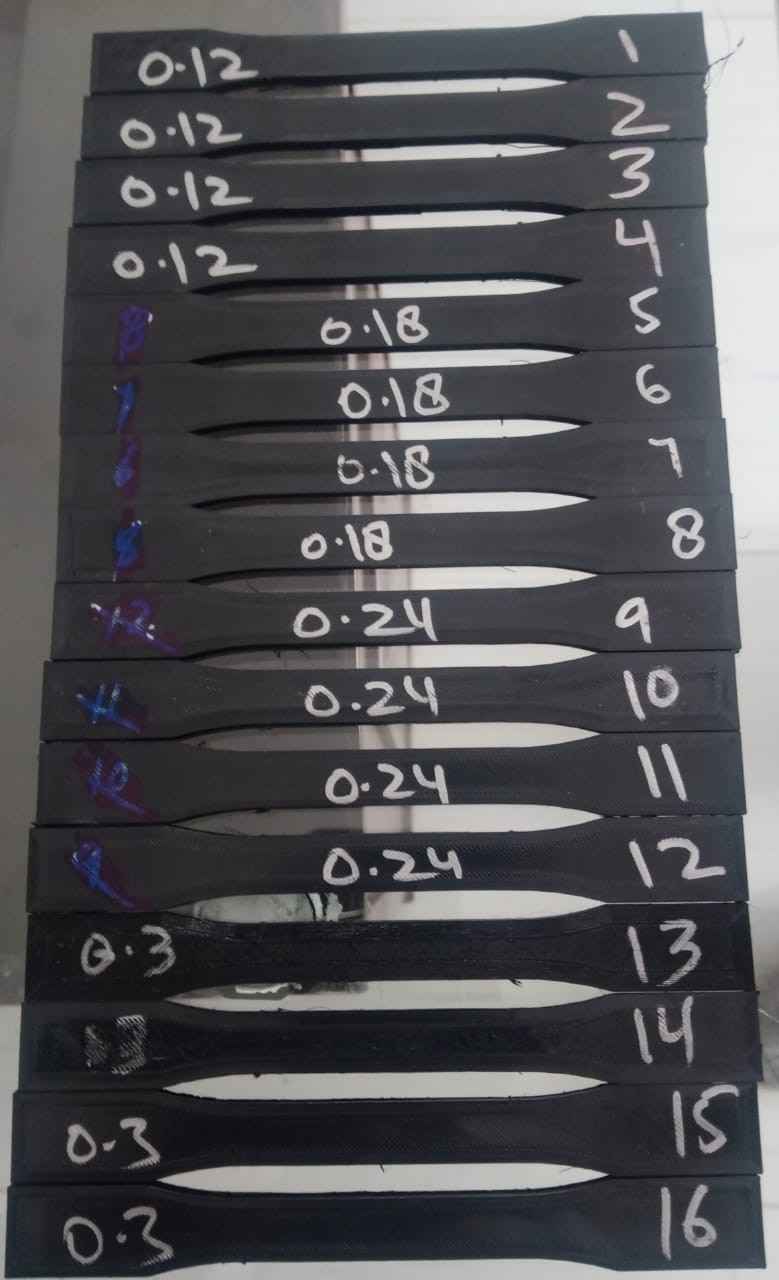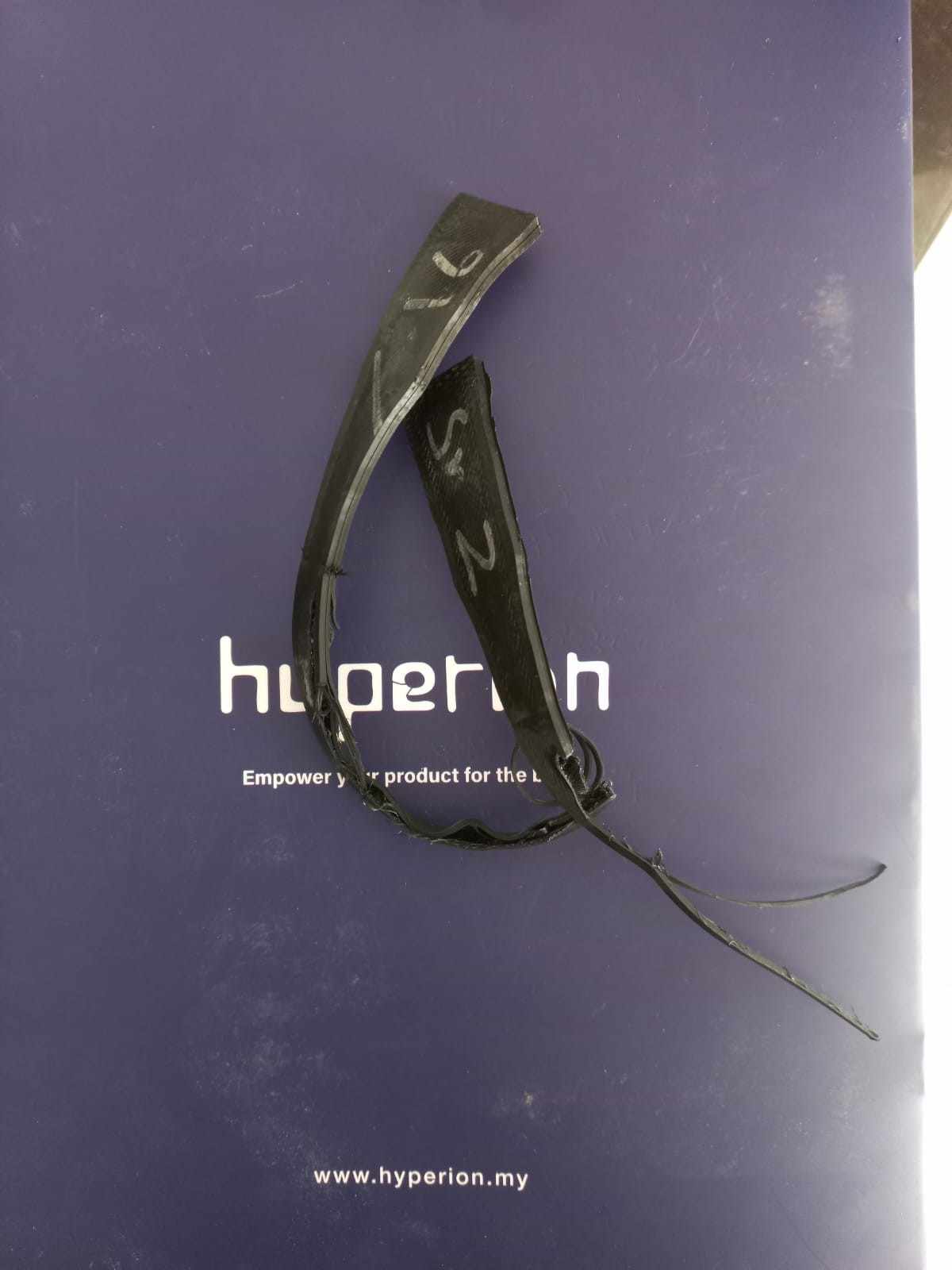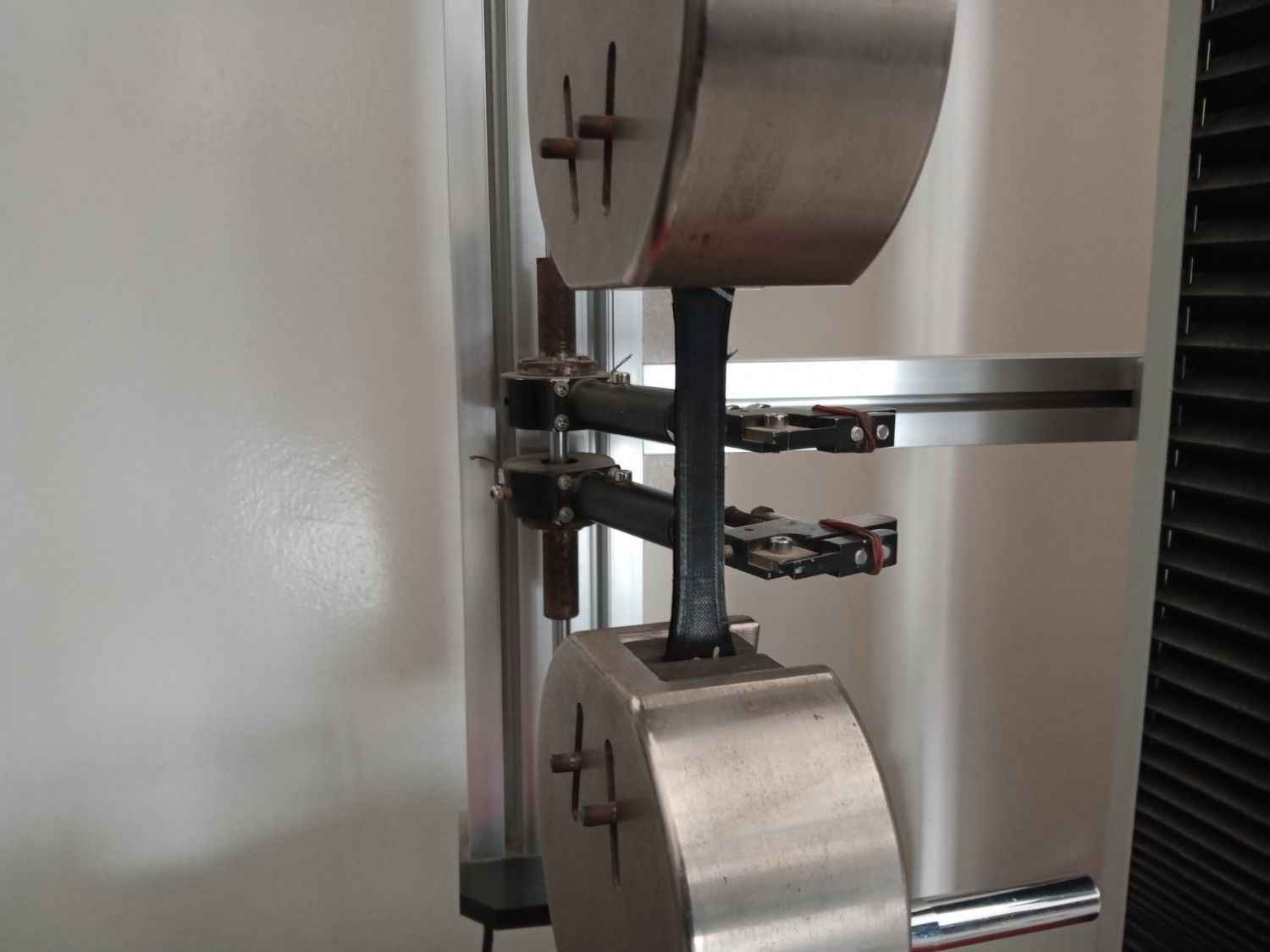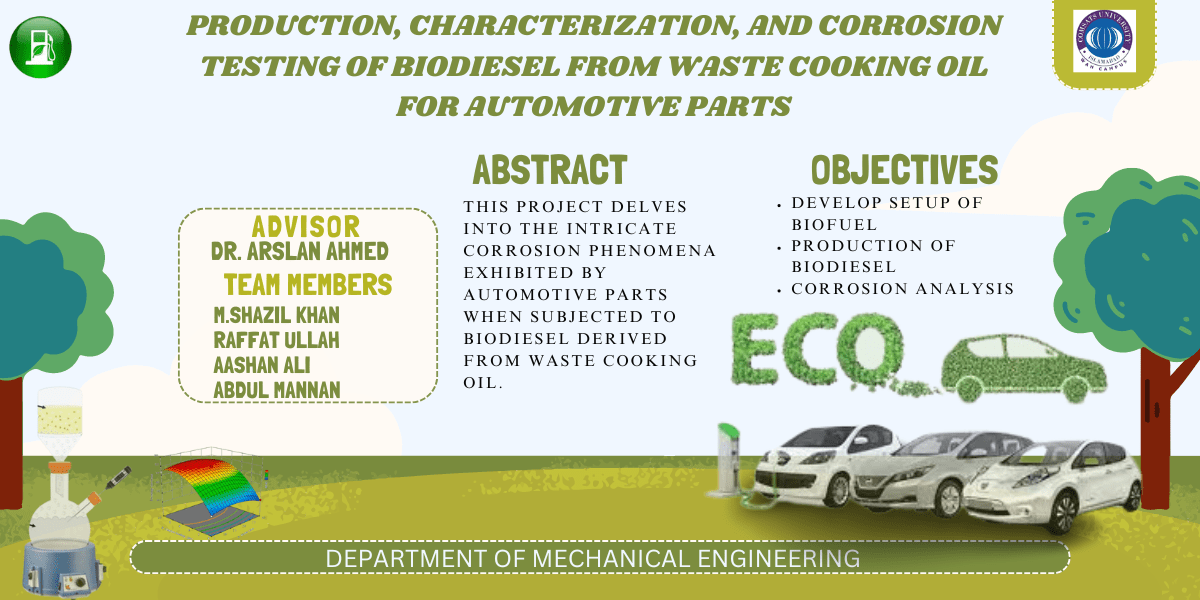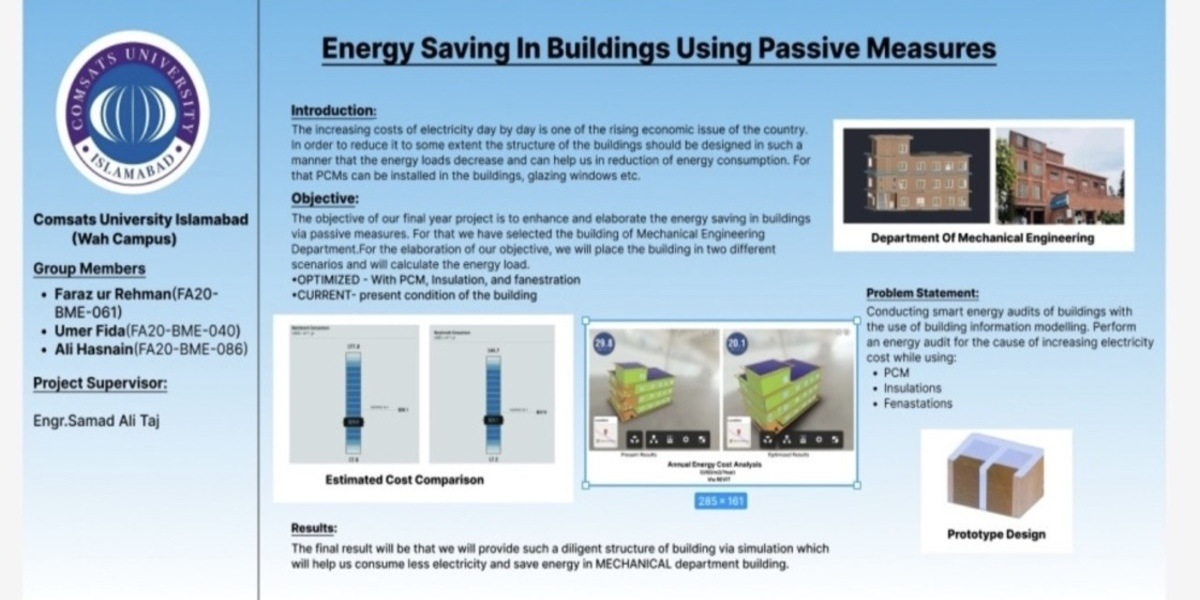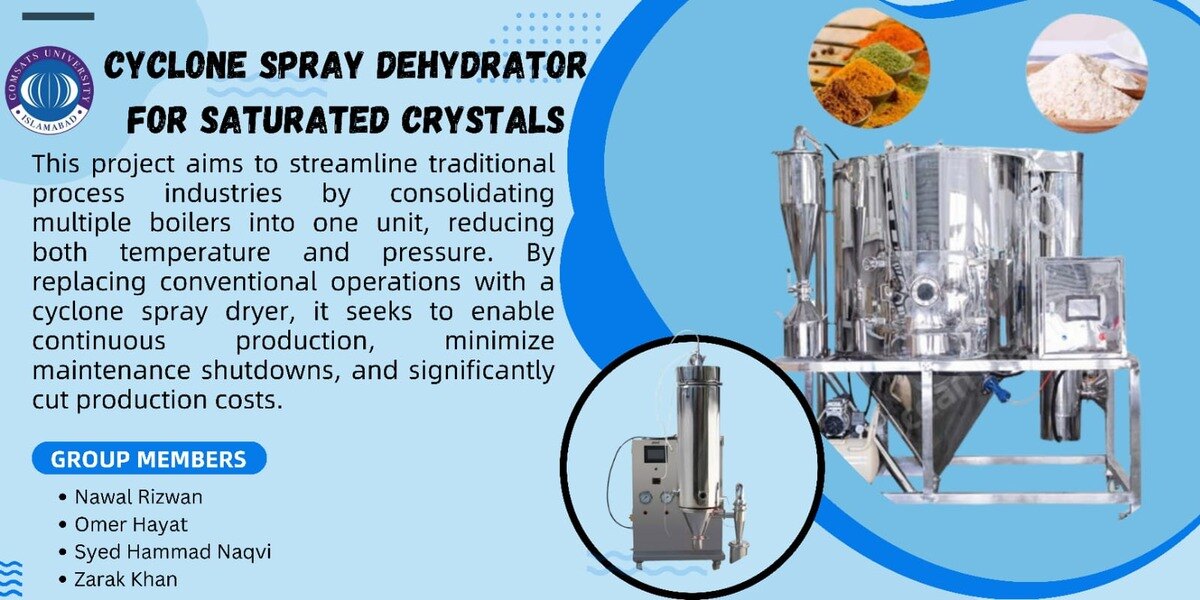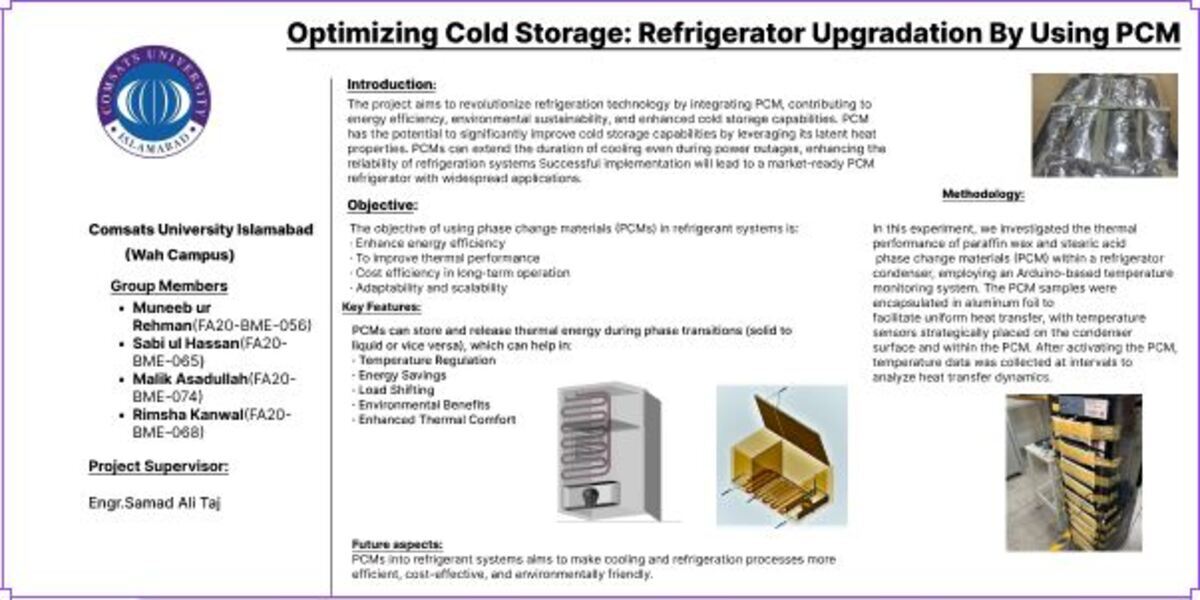This project aims to determine the mechanical properties of TPU-95A. Printed using different printing parameters. Thermoplastic polyurethane (TPU) has gained significant attention in the field of additive manufacturing due to its excellent mechanical properties, flexibility, and resilience. The mechanical properties of the TPU were determined by doing Tensile testing, Hardness testing, SEM, and XRD of the samples printed on different parameters using Fused Deposition Modeling. The results were analyzed using ANOVA and optimal parameters were found for obtaining the highest tensile strength and hardness for the TPU sample.
Objectives
• To synthesize the samples of TPU 95-A fiber composite using FDM.
• To investigate and optimize the mechanical properties of TPU 95-A Fiber Filaments by varying different printing parameters of the 3D printer.
Socio-Economic Benefit
Our project has the following socio-economic benefits:
• Enhanced Manufacturing Efficiency: By optimizing the mechanical properties of TPU-95-A using Fused Deposition Modeling (FDM), our project contributes to improving manufacturing processes.
• Technological Advancement: Investigating and optimizing TPU-95-A properties through FDM promotes technological innovation.
• Reduced Material Waste: FDM allows precise control over material deposition, minimizing waste during the printing process. Optimizing TPU-95-A properties ensures that fewer failed prints occur, reducing material consumption.
Methodologies
The methodology involved the modeling, printing, and testing of TPU-95A specimens via Fused Deposition Modeling (FDM). Modeling of the test specimens was carried out in accordance with ASTM D638-14 standards using SolidWorks software. The Taguchi technique was employed to optimize printing parameters, including infill density, shell count, and layer thickness, using a Taguchi L16(4^5) array design. The samples were synthesized according to the Taguchi experimental runs. Mechanical testing, including tensile testing, was performed using an XWM-20A electronic universal testing machine. Hardness testing was also conducted using a Shore A durometer. This comprehensive methodology aimed to investigate and optimize the mechanical properties of TPU-95A via FDM printing.
Outcome
The samples were obtained according to the ASTM-D638 standard. Tensile test results revealed varying strengths across different printing parameter combinations, with sample 16 exhibiting the highest strength. Analysis of signal-to-noise ratios (S/N) using the Taguchi method indicated the significant influence of shell count and layer thickness on tensile strength. ANOVA analysis confirmed the substantial effects of these parameters on mechanical properties, with shell count contributing the most. The regression equation provided insights into the relationship between process parameters and tensile strength, aiding in optimization and prediction. Validation of predicted properties demonstrated the reliability of the Taguchi method. Hardness testing further emphasized the importance of shell count in achieving maximum hardness. Overall, these findings contribute to understanding the influence of printing parameters on mechanical properties, facilitating the optimization of 3D-printed TPU-95A samples for desired performance characteristics.

